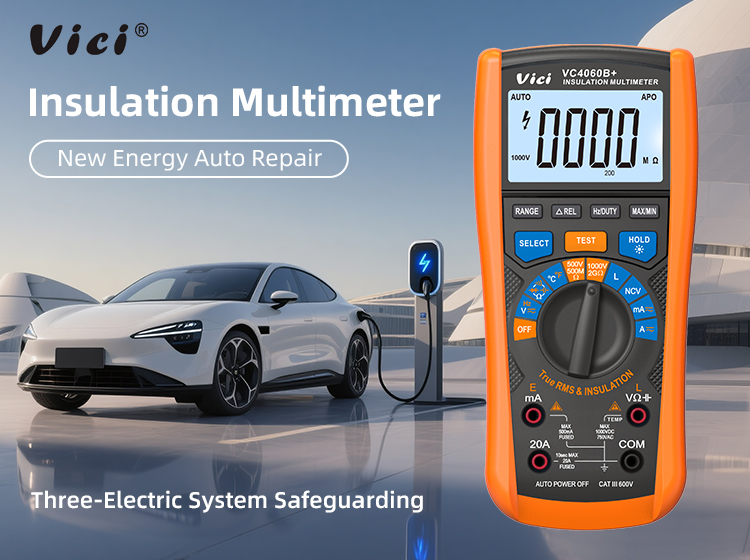How to Double the Efficiency of Detecting the Three-Electric Systems of New Energy Vehicles Using an Insulation Multimeter?
The new energy vehicle (NEV) market is experiencing robust growth. According to automotive industry data, global new energy vehicle sales reached 7.89 million units in the first five months of 2025. This massive market size has spawned a huge demand for safety maintenance, particularly for the battery, motor, and electronic control systems (known as "Three-Electric System"), which are directly related to driving safety.
As is well known, inspecting new energy vehicles requires a various testing tools. For example: a voltmeter is needed to measure the total voltage of high-voltage battery packs, input/output voltage of motor controllers, operating voltage of air conditioning compressors and DC-DC converters; an ammeter is used to test the output current of chargers and operating current of drive motors; an insulation tester is necessary for inspecting battery packs and motor controllers; an inductance meter is required to measure the inductance value of drive motor windings; a capacitance meter is used for checking electrolytic capacitors inside motor controllers; and a thermometer is needed to detect the temperature of resistance boxes, battery packs, and charging interfaces.
Under these circumstances, technicians have to carry multiple testing instruments with different functions and constantly switch between them during inspections, which seriously affects work efficiency. In an era pursuing high efficiency, the demand for multifunctional testing tools has given rise to the insulation multimeter, which can make the tedious testing process faster while reducing costs.
In today‘s pursuit of efficiency and convenience, how can we maintain our cars more intelligently?
We should not only follow regular maintenance but also inspect the core components of the car based on personal usage frequency to prevent problems before they occur. Like the maintenance and inspection of the three-electric systems, we can use an insulation multimeter to measure key parameters and judge its safety factor by ourselves. The NEV high-voltage three-electric systems typically operate above 300V, with the industry standards generally requires an insulation resistance ≥500Ω/V. The below form clearly outlines the potential risks associated with insufficient insulation resistance in different components or systems:
|
System/Component |
Insulation Resistance Requirement |
Potential Risks if Not Meeting Standards |
|
Battery System (408.8V) |
Must meet≥500Ω/V (eg. 40kΩ fails) |
Electric shock or system failure |
|
Motor Controller Cables |
Positive and negative poles ≥100MΩ |
Motor noise or Power interruption |
|
Charging Harnesses |
Fast-charging: theoretically infinite; Slow-charging: positive and negative poles ≥20MΩ |
High-voltage leakage risk |
In the market, products like the Vicimeter VC4060B+ insulation multimeter combine professional insulation testing functions with conventional parameter testing functions of a multimeter, meeting all electrical measurement needs. It is not only an excellent choice of improving work efficiency and cost control. It can be also applied in insulation testing of new energy systems such as photovoltaic inverters and energy storage systems, plays a significant role in scenarios such as circuit testing of industrial equipment, teaching and research in colleges and universities, and detection and maintenance of household appliances. Both professionals and DIY enthusiasts can use it in daily power equipment maintenance and electrical system inspection work.












